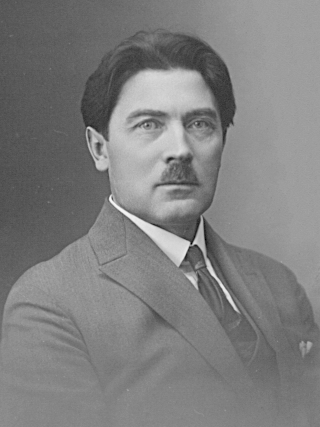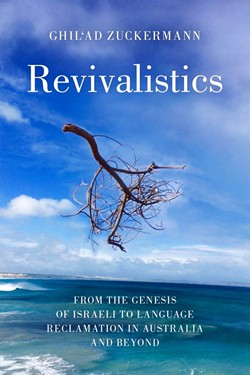In linguistics, a false friend is a word in a different language that looks or sounds similar to a word in a given language, but differs significantly in meaning. Examples of false friends include English embarrassed and Spanish embarazada 'pregnant'; English parents versus Portuguese parentes and Italian parenti ; English demand and French demander 'ask'; and English gift, German Gift 'poison', and Norwegian gift 'married'.
False cognates are pairs of words that seem to be cognates because of similar sounds and meaning, but have different etymologies; they can be within the same language or from different languages, even within the same family. For example, the English word dog and the Mbabaram word dog have exactly the same meaning and very similar pronunciations, but by complete coincidence. Likewise, English much and Spanish mucho came by their similar meanings via completely different Proto-Indo-European roots, and same for English have and Spanish haber. This is different from false friends, which are similar-sounding words with different meanings, and may or may not be cognates.
A false etymology is a false theory about the origin or derivation of a specific word or phrase. When a false etymology becomes a popular belief in a cultural/linguistic community, it is a folk etymology. Nevertheless, folk/popular etymology may also refer to the process by which a word or phrase is changed because of a popular false etymology. To disambiguate the usage of the term "folk/popular etymology", Ghil'ad Zuckermann proposes a clear-cut distinction between the derivational-only popular etymology (DOPE) and the generative popular etymology (GPE): the DOPE refers to a popular false etymology involving no neologization, and the GPE refers to neologization generated by a popular false etymology.
A lexicon is the vocabulary of a language or branch of knowledge. In linguistics, a lexicon is a language's inventory of lexemes. The word lexicon derives from Greek word λεξικόν, neuter of λεξικός meaning 'of or for words'.

A loanword is a word at least partly assimilated from one language into another language. This is in contrast to cognates, which are words in two or more languages that are similar because they share an etymological origin; and calques, which involve translation. Loanwords from languages with different scripts are usually transliterated, but they are not translated. Additionally, loanwords may be adapted to the phonology, phonotactics, orthography, and morphology of the target language. When a loanword is fully adapted to the rules of the target language, it is distinguished from native words of the target language only by its origin. However, often the adaptation is incomplete, so loanwords may conserve specific features distinguishing them from native words of the target language: loaned phonemes and sound combinations, partial or total conserving of the original spelling, foreign plural or case forms or indeclinability.
In linguistics, a calque or loan translation is a word or phrase borrowed from another language by literal word-for-word or root-for-root translation. When used as a verb, "to calque" means to borrow a word or phrase from another language while translating its components, so as to create a new lexeme in the target language. For instance, the English word "skyscraper" has been calqued in dozens of other languages, combining words for "sky" and "scrape" in each language. Another notable example is the Latin weekday names, which came to be associated by ancient Germanic speakers with their own gods following a practice known as interpretatio germanica: the Latin "Day of Mercury", Mercurii dies, was borrowed into Late Proto-Germanic as the "Day of Wōđanaz" (Wodanesdag), which became Wōdnesdæg in Old English, then "Wednesday" in Modern English.
A root is the core of a word that is irreducible into more meaningful elements. In morphology, a root is a morphologically simple unit which can be left bare or to which a prefix or a suffix can attach. The root word is the primary lexical unit of a word, and of a word family, which carries aspects of semantic content and cannot be reduced into smaller constituents. Content words in nearly all languages contain, and may consist only of, root morphemes. However, sometimes the term "root" is also used to describe the word without its inflectional endings, but with its lexical endings in place. For example, chatters has the inflectional root or lemma chatter, but the lexical root chat. Inflectional roots are often called stems. A root, or a root morpheme, in the stricter sense, may be thought of as a monomorphemic stem.
As the Old Testament was written in Hebrew, Hebrew has been central to Judaism and Christianity for more than 2000 years.
Etymology is the scientific study of the origin and evolution of a word's semantic meaning across time, including its constituent morphemes and phonemes. It is a subfield of historical linguistics, philology, and semiotics, and draws upon comparative semantics, morphology, pragmatics, and phonetics in order to construct a comprehensive and chronological catalogue of all meanings that a morpheme, phoneme, word, or sign has carried across time.
Phono-semantic matching (PSM) is the incorporation of a word into one language from another, often creating a neologism, where the word's non-native quality is hidden by replacing it with phonetically and semantically similar words or roots from the adopting language. Thus the approximate sound and meaning of the original expression in the source language are preserved, though the new expression in the target language may sound native.
Language contact occurs when speakers of two or more languages or varieties interact with and influence each other. The study of language contact is called contact linguistics. When speakers of different languages interact closely, it is typical for their languages to influence each other. Language contact can occur at language borders, between adstratum languages, or as the result of migration, with an intrusive language acting as either a superstratum or a substratum.
In linguistics, an internationalism or international word is a loanword that occurs in several languages with the same or at least similar meaning and etymology. These words exist in "several different languages as a result of simultaneous or successive borrowings from the ultimate source". Pronunciation and orthography are similar so that the word is understandable between the different languages.
The roots of verbs and most nouns in the Semitic languages are characterized as a sequence of consonants or "radicals". Such abstract consonantal roots are used in the formation of actual words by adding the vowels and non-root consonants which go with a particular morphological category around the root consonants, in an appropriate way, generally following specific patterns. It is a peculiarity of Semitic linguistics that a large majority of these consonantal roots are triliterals.
Estonian vocabulary, i.e., the vocabulary of the Estonian language, was influenced by many other language groups.
A semantic loan is a process of borrowing semantic meaning from another language, very similar to the formation of calques. In this case, however, the complete word in the borrowing language already exists; the change is that its meaning is extended to include another meaning its existing translation has in the lending language. Calques, loanwords and semantic loans are often grouped roughly under the phrase "borrowing". Semantic loans often occur when two languages are in close contact, and they take various forms. The source and target word may be cognates, which may or may not share any contemporary meaning in common; they may be an existing loan translation or parallel construction ; or they may be unrelated words that share an existing meaning.

Johannes Aavik was an Estonian philologist and Fennophile who played an influential role in the modernization and development of the Estonian language.

Ghil'ad Zuckermann is an Israeli-born language revivalist and linguist who works in contact linguistics, lexicology and the study of language, culture and identity.

Ado Grenzstein, pseudonym A. Piirikivi was an Estonian journalist, writer and teacher, brother of Tõnis Grenzstein. In 1881 he founded the Olevik newspaper, which become one of the most important Estonian newspapers of the period. The purpose of the paper was "weaning the Estonian peasant readership away from the 'firebrands and madcaps' who edited Sakala. He soon broke with the Estonian national movement and became an apologist of Russification. He even went further, expressing doubt whether the loss of the Estonian nation would be of any consequence to man-kind. His views have been characterized as "national nihilism". In 1901 he left Estonia and settled first in Dresden, and then later in Paris.
In linguistics, an etymological calque is a lexical item calqued from another language by replicating the etymology of the borrowed lexical item although this etymology is irrelevant for the meaning being borrowed.

Revivalistics: From the Genesis of Israeli to Language Reclamation in Australia and Beyond is a scholarly book written by linguist and revivalist Ghil'ad Zuckermann. It was published in 2020 by Oxford University Press. The book introduces revivalistics, a trans-disciplinary field of enquiry exploring "the dynamics and problematics inherent in spoken language reclamation, revitalization, and reinvigoration".





